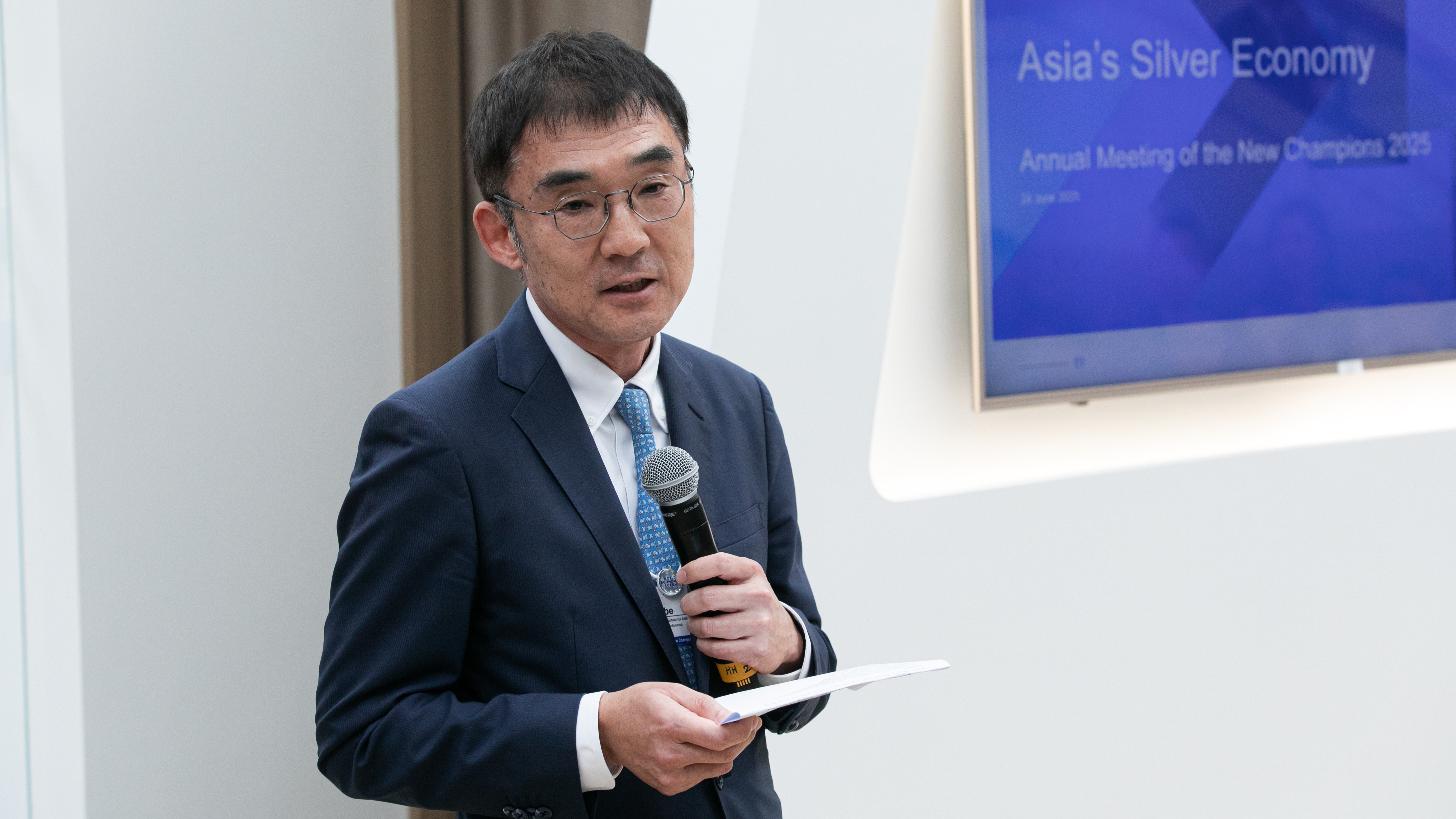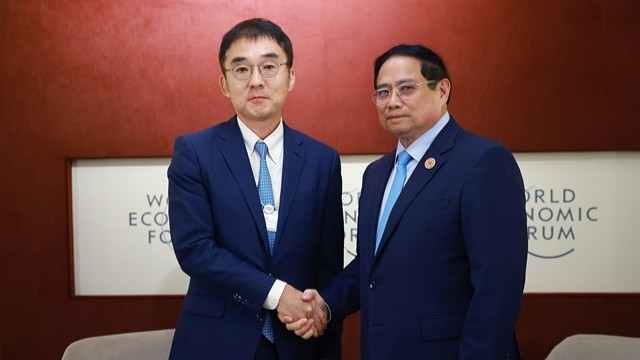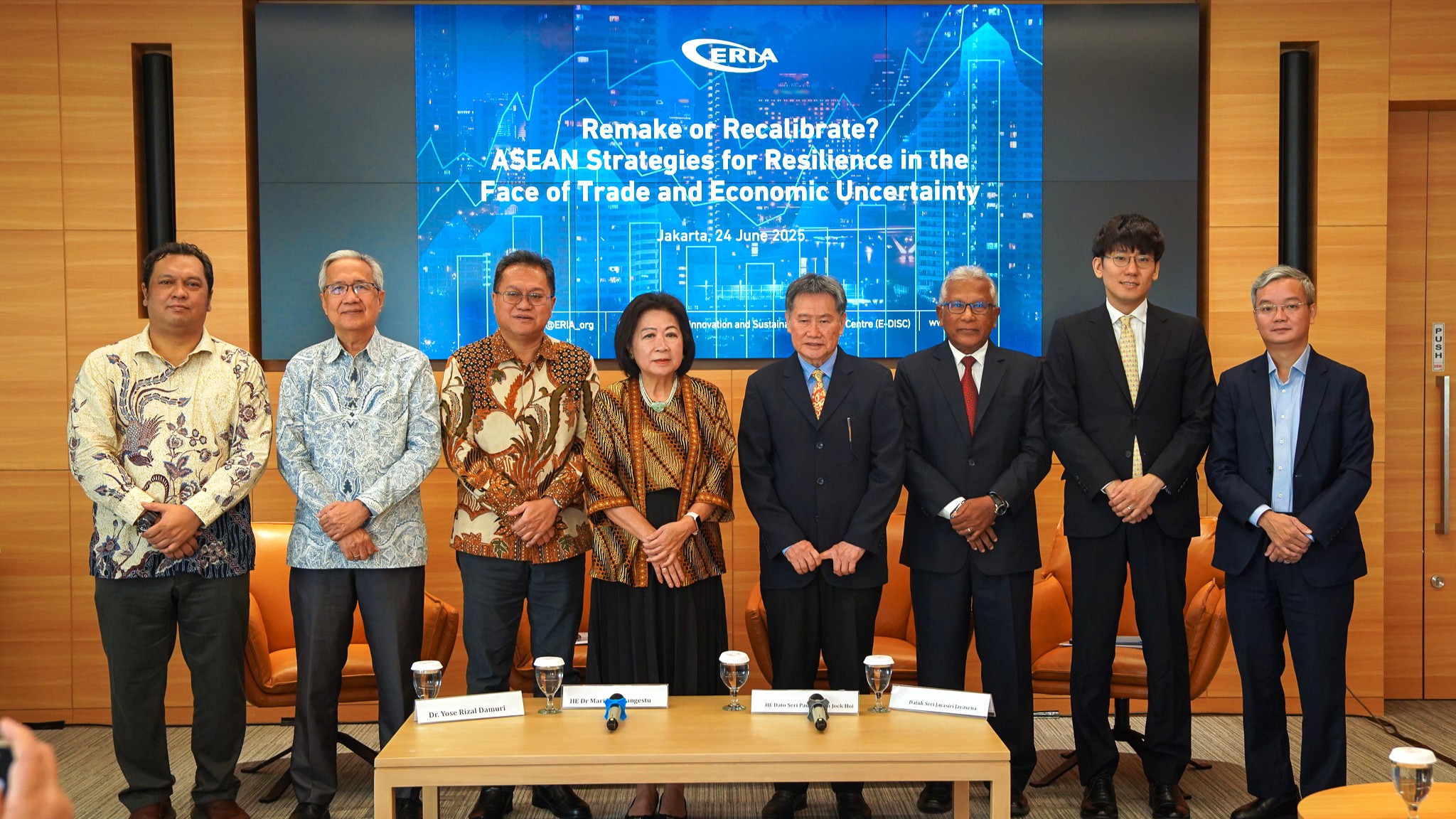News

Join us for the press conference 'Hydrogen as an Important Part of Carbon Neutrality for ASEAN' to get exclusive insights from:
- Mr Shigeru Kimura, ERIA's Special Advisor on Energy Affairs, on the background of energy demand in EAS and ASEAN and the importance of hydrogen, and
- Dr Saleh Abdurrahman, Expert Staff for the Minister of Energy and Mineral Resources of the Republic of Indonesia, on Indonesia’s perspective on hydrogen as energy source.
- Dr Joko Purwanto, ERIA’s Energy Economist, on the East Asia Summit Hydrogen Working Group Press Release
Date and Time:
Tuesday, 13 April 2021, 11 AM to 11:45 AM (UTC+7; Jakarta, Indonesia time)
Location:
Virtual Room (link will be sent with confirmation of RSVP)
Agenda:
Time | Program |
11:00−11:05 | Opening by Mr Koji Hachiyama |
11:05−11:15 | Presentation by Mr Shigeru Kimura |
11:15−11:20 | Presentation by Dr Saleh Abdurrahman |
11:20−11:25 | Presentation by Dr Joko Purwanto |
11:25−11:45 | Q&A session |
About the event:
Energy demand in the ASEAN region will significantly increase by 2.8 times (3.3% growth per year) from 2017 to 2050 according to the Business-as-Usual (BAU) scenario of the East Asia Summit (EAS) Energy Outlook published by ERIA. The estimated demand, as measured by the Total Primary Energy Supply (TPES), assumes stable economic growth at 4.3% a year. As a result, the share of fossil fuels in 2050 will still be 88%. Even under the Alternative Policy Scenario (APS) which includes aggressive Energy Efficiency and Conservation (EEC) and Renewable Energy (RE) targets, the share of fossil fuels in 2050 will be 82%.
However, policies supporting a clean energy transition or decarbonization are becoming increasingly important as Organization for Economic Cooperation and Development (OECD) countries aim for ‘Net Zero Emissions’ by 2050 with China aiming to reach it by 2060. ‘Net Zero Emissions’ signifies the reduction of fossil fuel consumption to almost zero. It will be very challenging to achieve this target by 2050 even by OECD countries with strong EEC and RE policy measures.
Given these circumstances, hydrogen should be carefully considered because it does not emit CO2. In addition, hydrogen can be used in fuel cell vehicles (FCVs) for transportation, for heat production in industry, and in power generation. Currently, power generation uses mostly coal and gas and vehicles rely on oil in ASEAN. Thus, replacing fossil fuels with hydrogen would significantly reduce emissions.
Hydrogen is not a natural resource like oil and gas because it must be produced. There are two main ways to produce carbon-free hydrogen: first, from fossil fuels applying reforming and gasification technologies with carbon capture and storage (CCS), known as ‘blue hydrogen’, and second, through electrolysis using electricity from zero-emission power sources such as solar/photovoltaic, i.e., ‘green hydrogen’. Currently, hydrogen production is too expensive at around USD10 per kg. However, it can become affordable (USD 2-3 per kg) by developing innovative technology and increasing demand.
Under the 4.2% annual growth rate assumption, the GDP per capita in ASEAN will increase to USD 15,100 in 2050 from USD 4,880 in 2017. With the higher GDP and lower cost for hydrogen, ASEAN can transition to hydrogen-based FCVs and power generation by around 2050. Leadership of developed countries such as Japan will be important to accomplish the cost reduction through technical and policy support to hydrogen businesses, including mixing hydrogen to natural gas at gas power plants and providing subsidies to FCVs.
Japan’s research and development agency under the Ministry of Economy, Trade, and Industry (METI) – the New Energy and Industrial Technology Development Organization(NEDO) - has been piloting three hydrogen projects: first, hydrogen production from natural gas applying reforming technology in Brunei Darussalam with transport to Japan as methylcyclohexane (MCH); second, hydrogen production with CCS from brown coal in Australia with transport to Japan as liquid hydrogen; and third, hydrogen production from electrolysis using Solar/PV’s electricity in Fukushima prefecture, Japan.
To support the further development of innovative technology and appropriate policies, ERIA initiated the EAS Hydrogen Working Group in 2019 as a platform for EAS countries to understand each other in terms of hydrogen demand, supply, and supply chain progress in the region. The virtual working group meeting was held to determine hydrogen’s role in the clean energy transition to the horizon 2050 and the results are released as attached.
Subscribe to mailing list
Invitations | Publications | Newsletters


